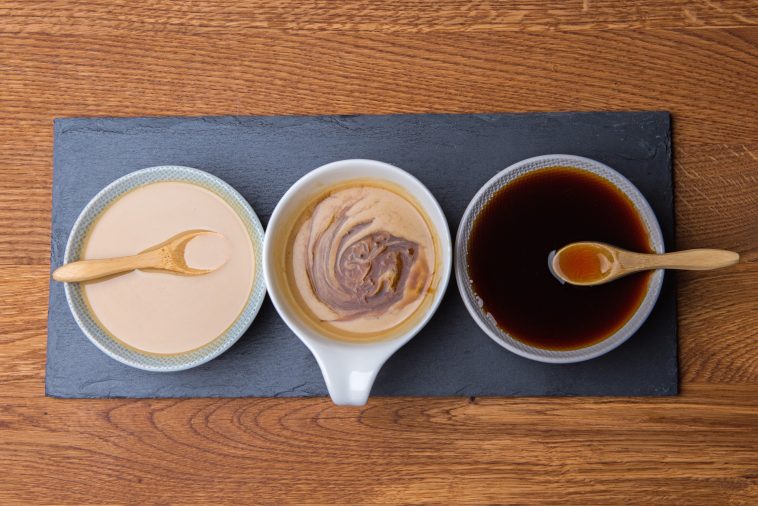Herbs and spices have multiple uses, adding to their value. You may only consider culinary uses, but there are other functions that make herbs and spices valuable. This may include medicinal, beauty, and nutritional functions.
One of the reasons why herb and spice production is such a good avenue to venture down is that the demand for these commodities keep rising with the demand for food worldwide.
Culinary, medicinal, beauty, and health are some of the areas that use herbs and spices the most to benefit humanity. By investing in producing herbs and spices, you also create an opportunity for yourself to later add value to your spice production by producing products from these spices. This may include oils, pre-packaged spice mixes or even sauces. Even a refreshing mix of herbs for herbal tea could be on the list.
Nutritional value of herbs and spices

Basil is used as the main ingredient in pesto, an Italian sauce. Coriander leaves can also be used. (Source: Vecteezy)
Because spices are mainly used to flavour foods, the nutritional value these plants have is often overlooked. The quantities in which these substances are usually added to dishes are so small that the impact that they make on nutrition is minute.
But in spite of this, they remain full of micronutrients that can aid in fighting malnutrition. The silent hunger, as the phenomenon is known, is when people eat food, but don’t consume enough micronutrients to fight malnutrition. Hunger reduces, but malnutrition remains the same if people do not have enough variety in their diets.
Vital vitamins and minerals that are added to meals through herbs and spices are Vitamins A, B1 – 12, and C, as well as calcium, copper, iron, potassium, and magnesium. All of these minerals play a vital role in keeping the body functioning. Potassium, for instance, assists in cell building and regulating blood pressure.
Culinary uses of herbs and spices

Herbs and spices have many culinary uses. Apart from flavouring dishes, it can also be used in drinks. Herbal tea or chai lattes are some examples of this. (Source: Anna Pou on Pexels)
Most commonly, herbs and spices are used to improve the flavour of meals. But beyond making the foods smell and taste delicious, these compounds also assist in preserving foods!
Certain chemicals in the different spices help prevent bad bacteria grow on food. This can be through acting as an antibacterial or antimicrobial substance. Cumin, black pepper, mustard, and ginger are most commonly used for this purpose throughout history, often combining them with salt to cure meat.
Saffron, garlic, coriander, and rosemary can also be used to preserve meat. Oregano, cloves, and cinnamon in particular can be used to prevent raw chicken from getting spoiled by microbial growth. This is by no means a replacement for preserving meats through drying, freezing, and so forth. It just means that you lower the risk of food spoiling.
These same compounds are also used to add flavour to many foodstuffs like soups, sauces, pickling, a variety of dishes, drinks, or wines.
A spice such as sesame can be used to make Tahini, a paste used as a sauce that originates from the Mediterranean. A similar example can be either basil or coriander pesto. The sauce originated in Italy but is used in a variety of dishes.
In some cases, spices such as turmeric can be used as a natural dye.
Health and beauty value of herbs and spices

Many people use natural remedies and homoeopathic treatments, derived from herbs and spices for ailments and health benefits,. (Source: Vecteezy)
The most common and well-known medicinal use for herbs and spices may be aroma therapy. Essential oils extracted from these plants are inhaled to calm or ease headaches and nausea. Additionally, the oils are used to make perfumes, deodorant, or room improvers.
Some of the oils have healing properties that combat scarification and improve skin texture.
Some oils have antibacterial and antiinflammatory properties that make it useful for skincare.
When it comes to health care, using natural remedies are called homoeopathy. These remedies can also be used for relieving stomach aches, muscle pain, and arthritis. Some individuals find genuine relief in these compounds and they remain an alternative to western medicine. Some treatments also combat intestinal worm infestations.
A survey conducted by the World Health Organisation indicated that 70 to 80% of the global population uses herbal sources for modern medicine.

Essential oils have multiple health benefits and can be used in aromatherapy as well. (Source: Pexels)
In addition, up to 60% of the world’s population relies on herbal plants for medical benefits. This shows that even today, many people need herbs and spices to maintain their health.
Although it does not replace a doctor’s treatment, diabetics and people suffering from heart disease have used spices as natural ways to regulate their conditions. Herbs and spices also contain antioxidants, which are molecules that search for free radicals in our bodies and neutralise their harmful effects.
Sources
El-Sayed, S.M. and Youssef, A.M. (2019) Potential application of herbs and spices and their effects in functional dairy products, Heliyon. Elsevier. Available at: https://www.sciencedirect.com/science/article/pii/S2405844019356142#:~:text=Functional%20role%20of%20herbs%20and,preservatives%20and%20for%20medicinal%20purposes.
Healthy spices nutrition facts and the health benefits of spices (2009) Nutrition And You.com. Available
at: https://www.nutrition-and-you.com/healthy_spices.html
TA;, J. (2019) Health benefits of culinary herbs and spices, Journal of AOAC International. U.S. National Library of Medicine. Available at: https://pubmed.ncbi.nlm.nih.gov/30651162/#:~:text=Spices%20and%20herbs%20such%20
as,heart%20and%20respiratory%20system%20diseases









